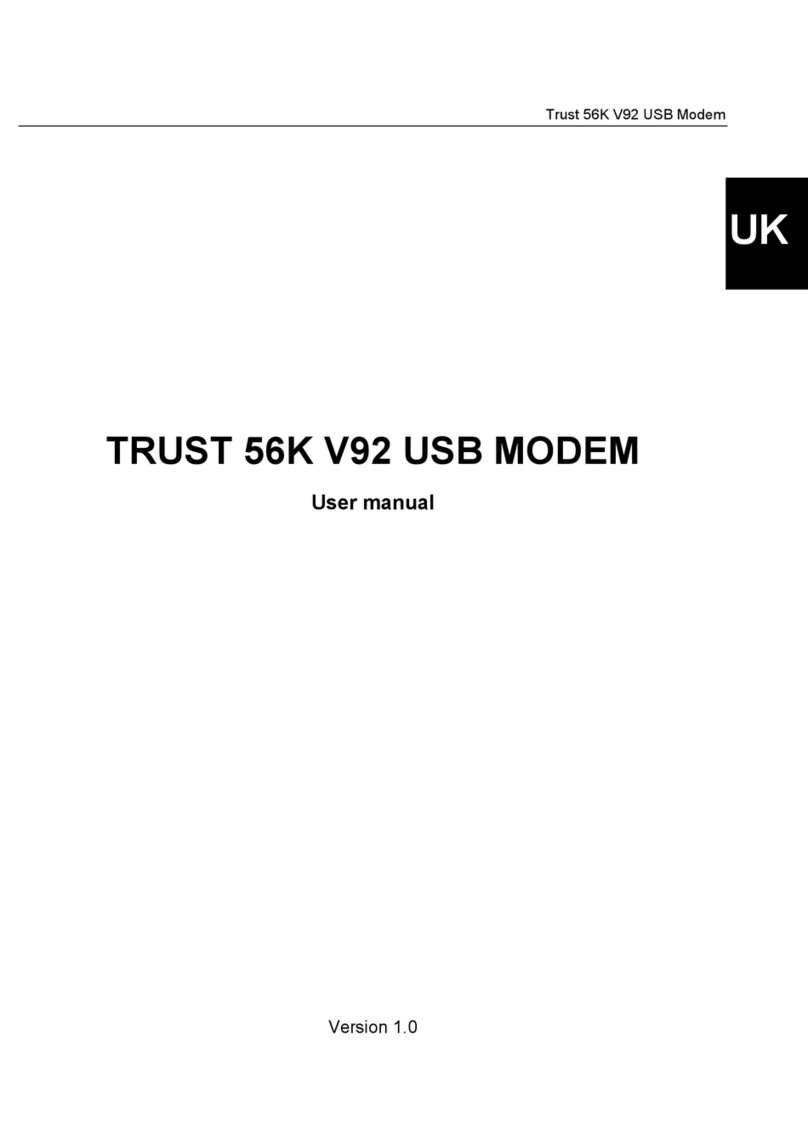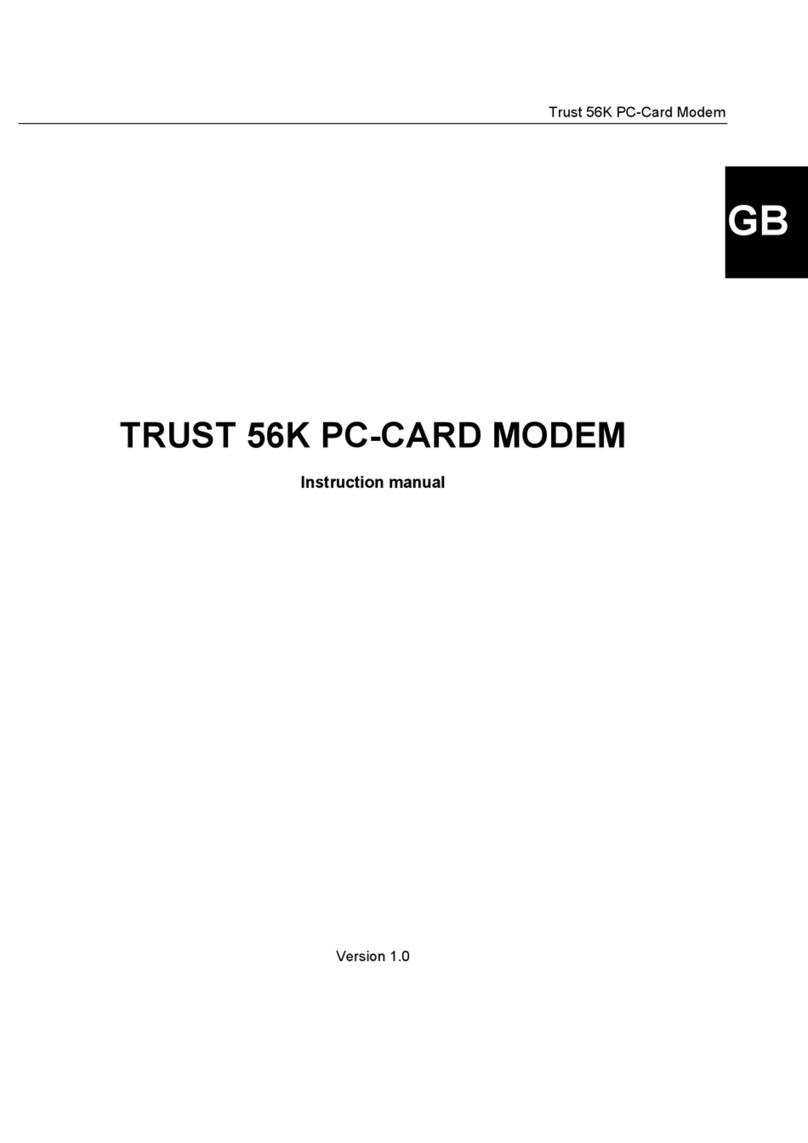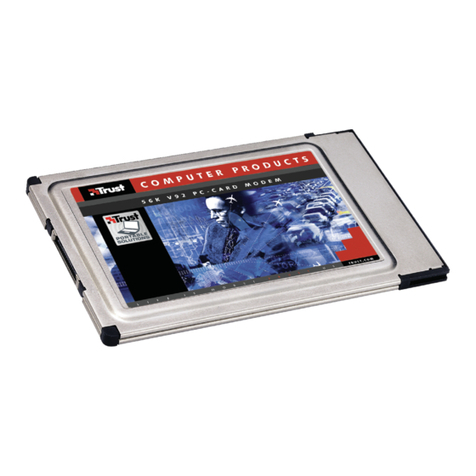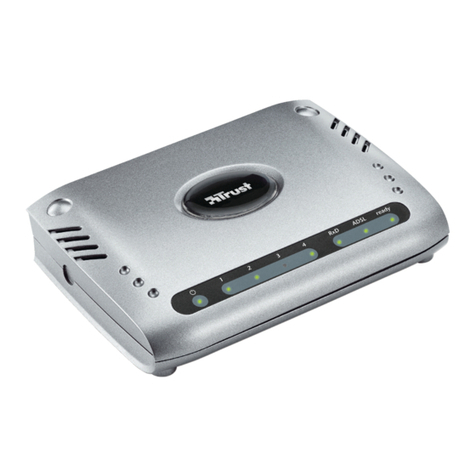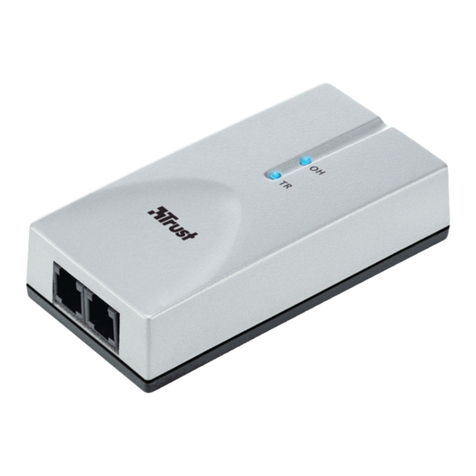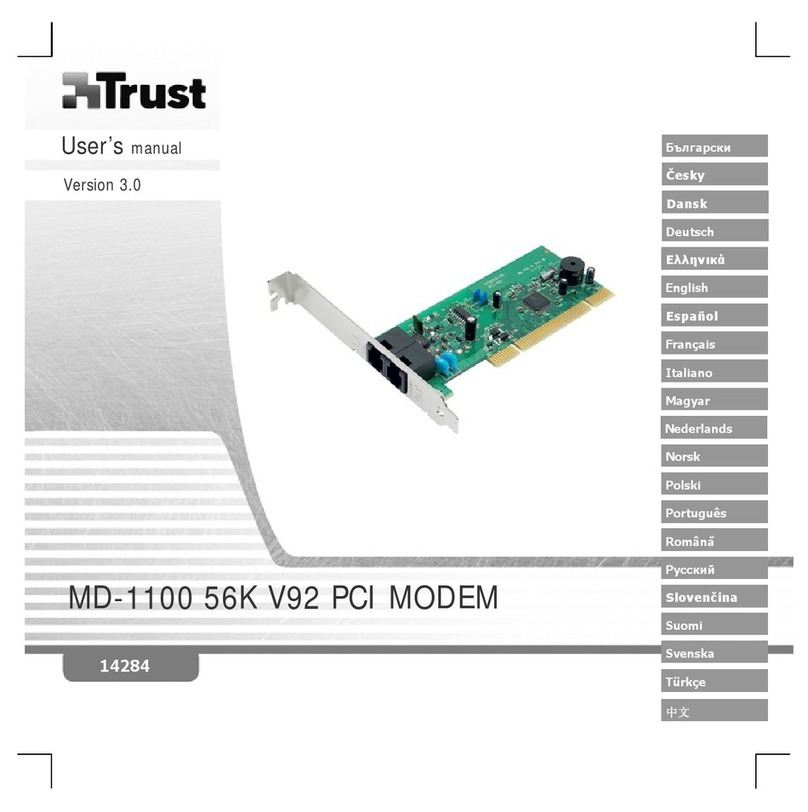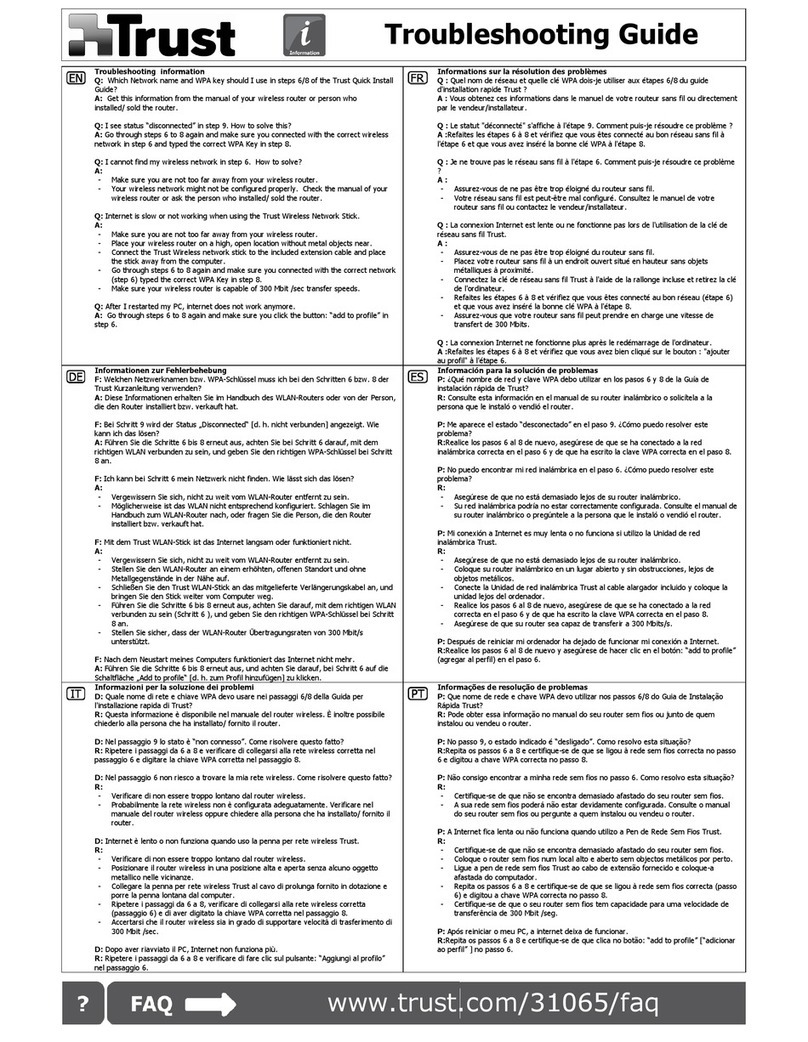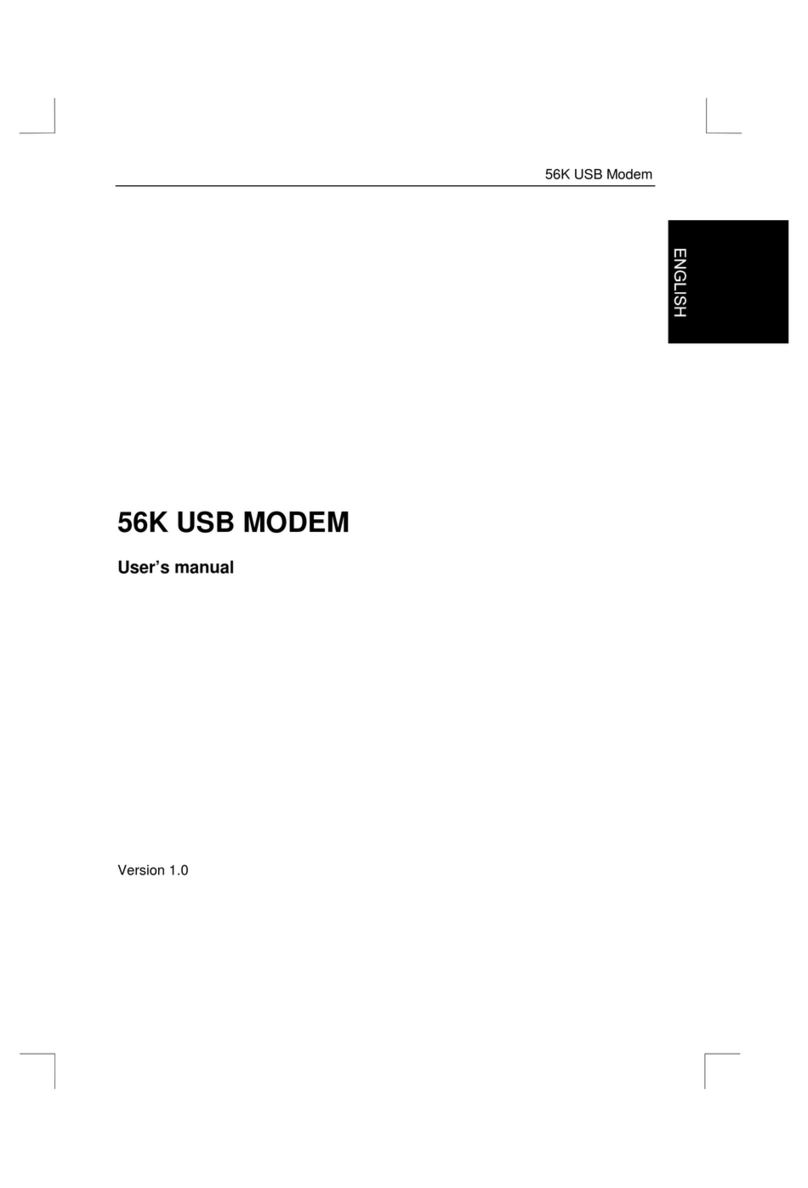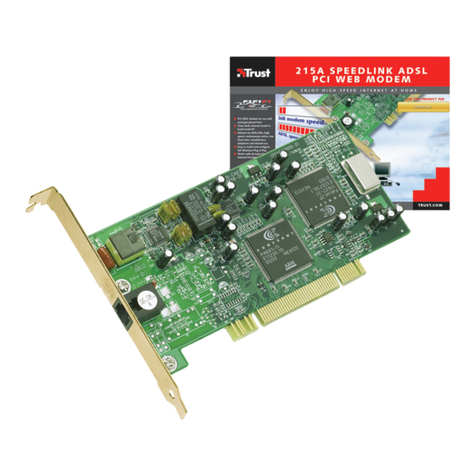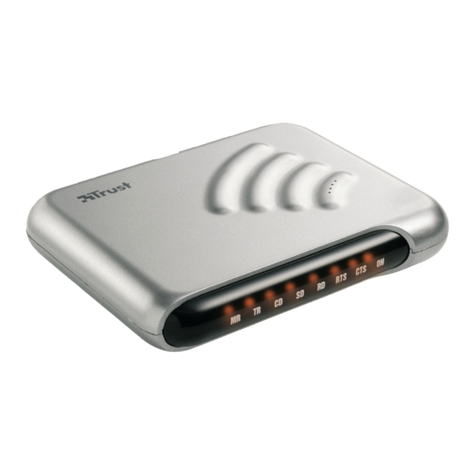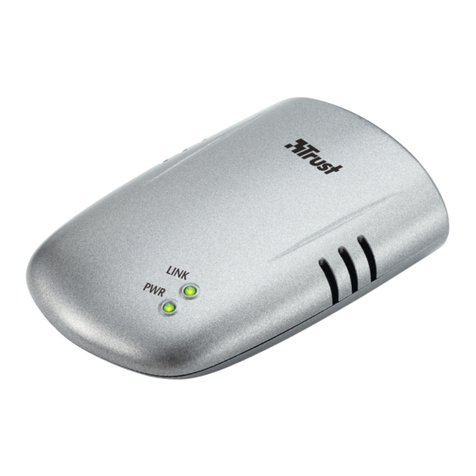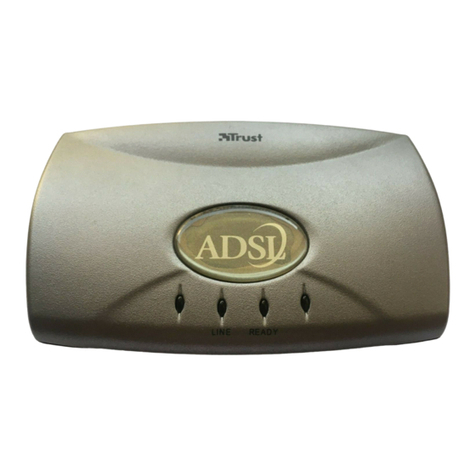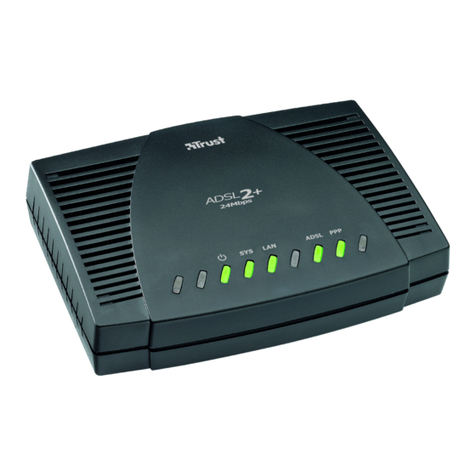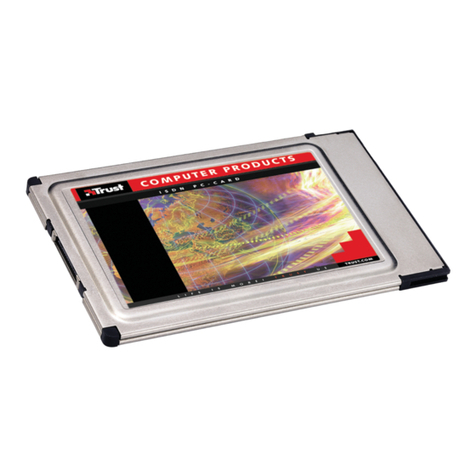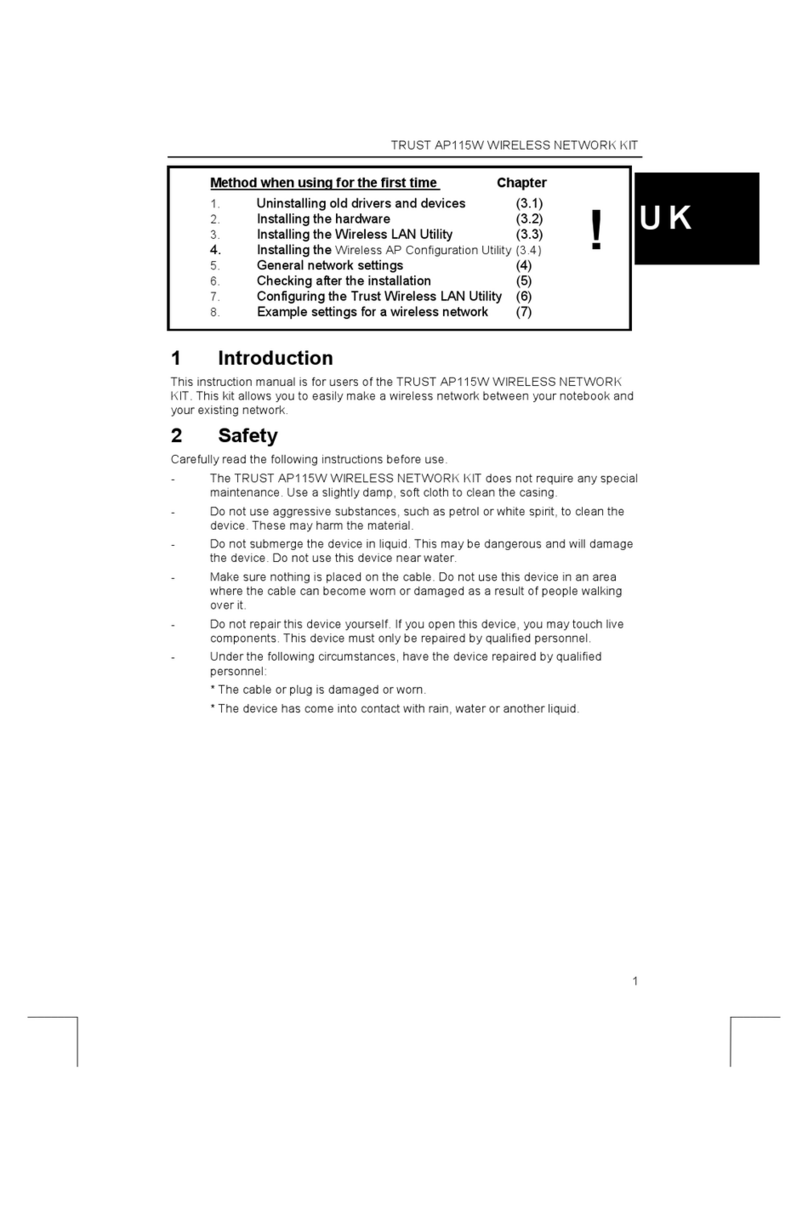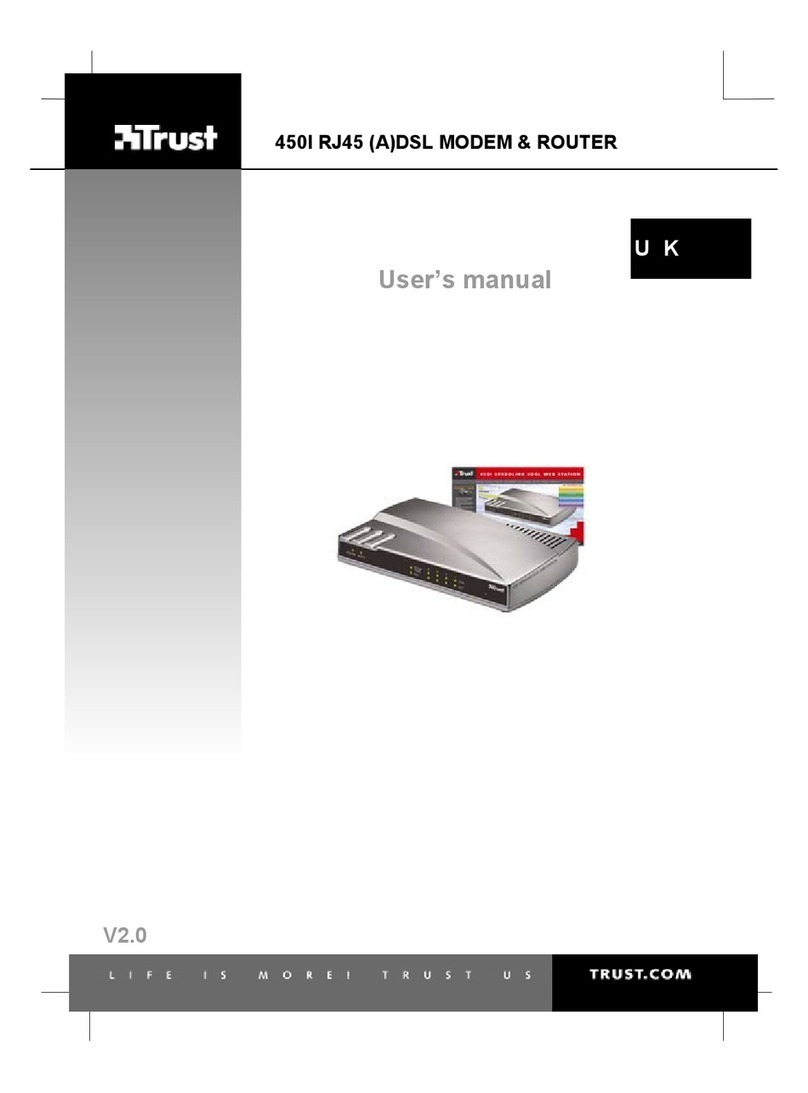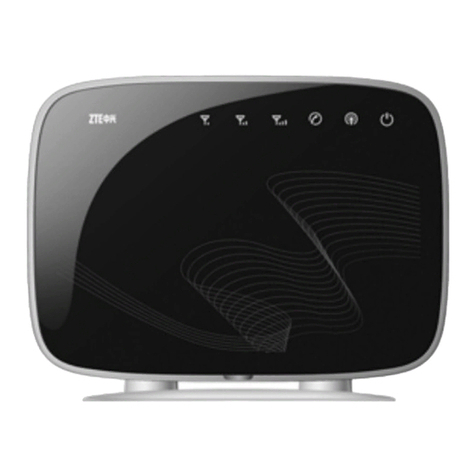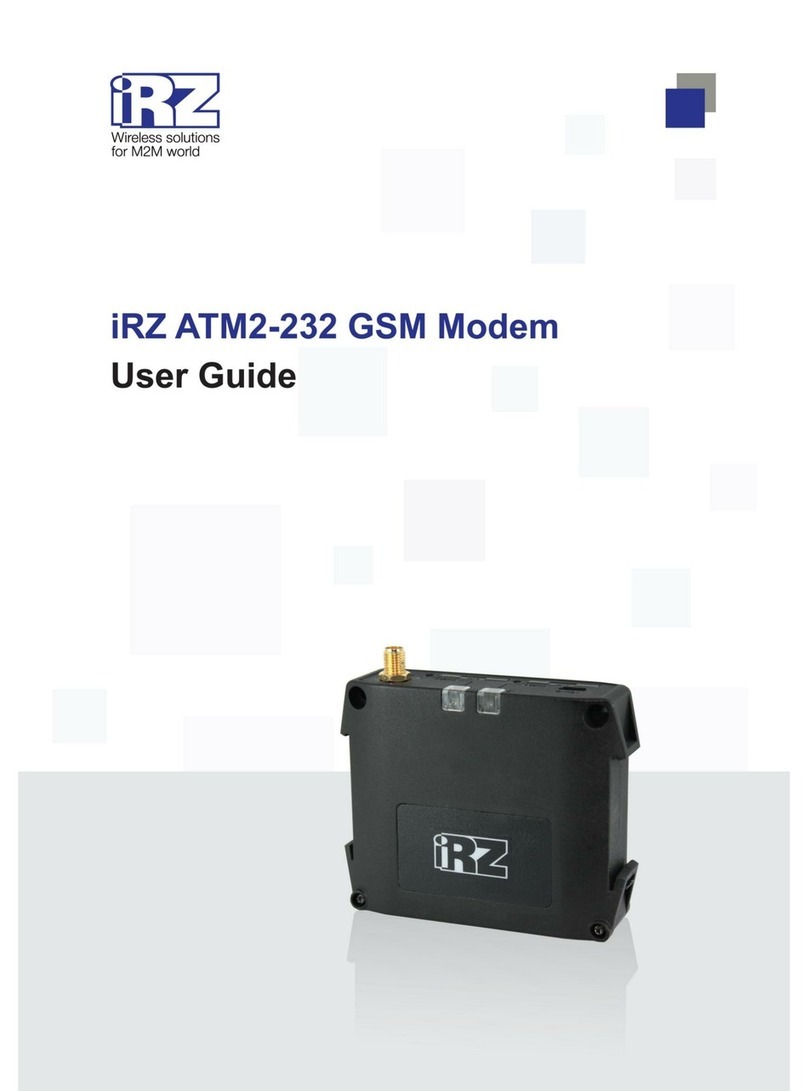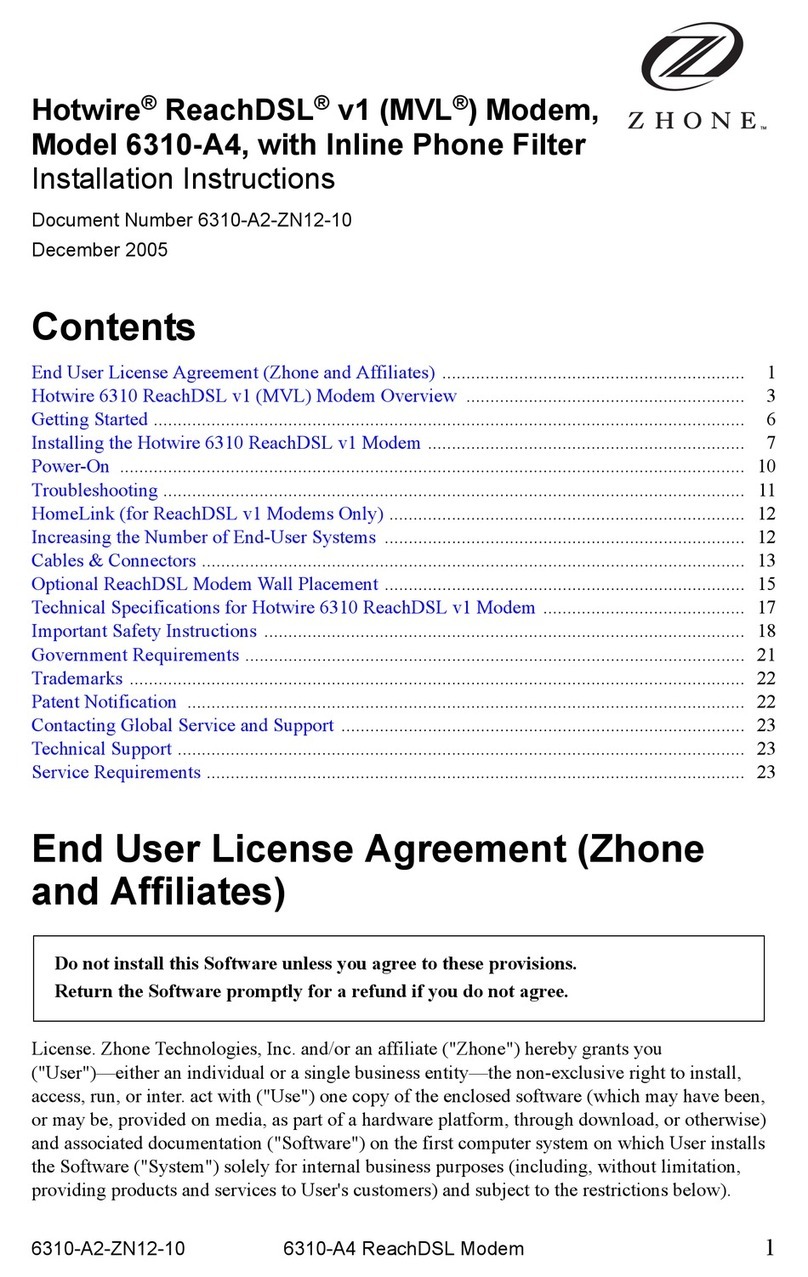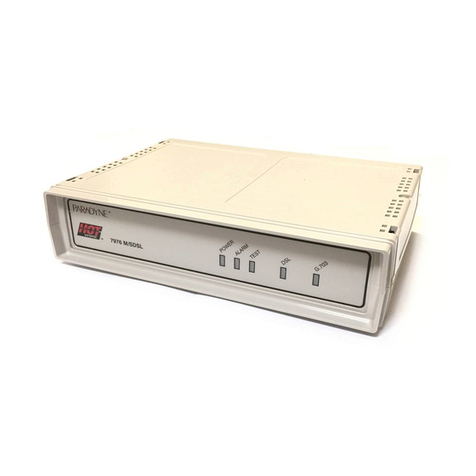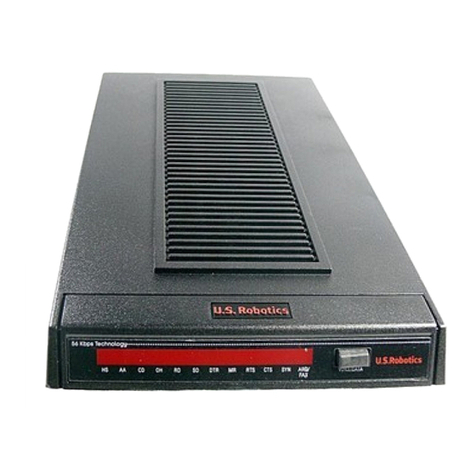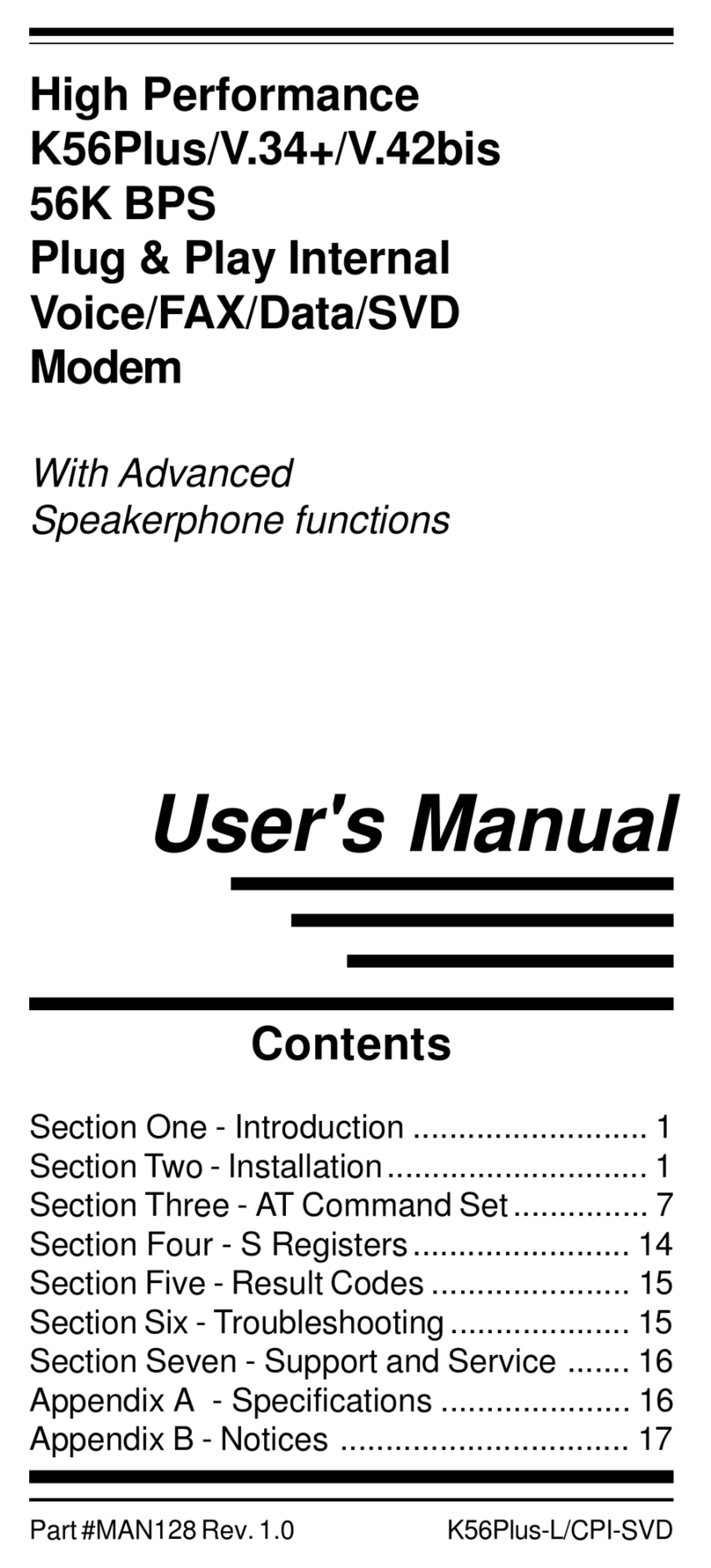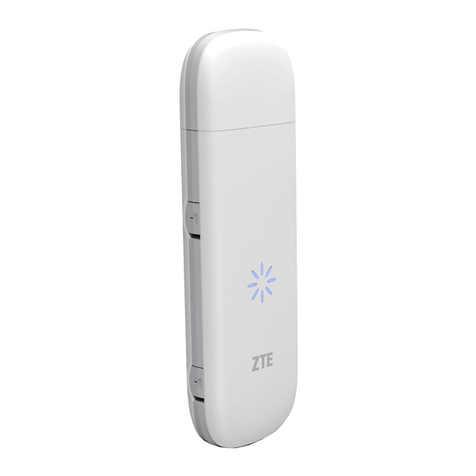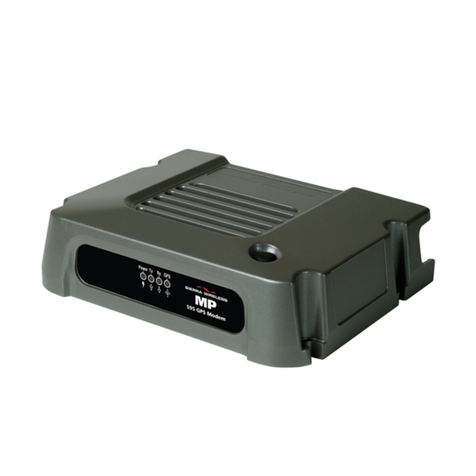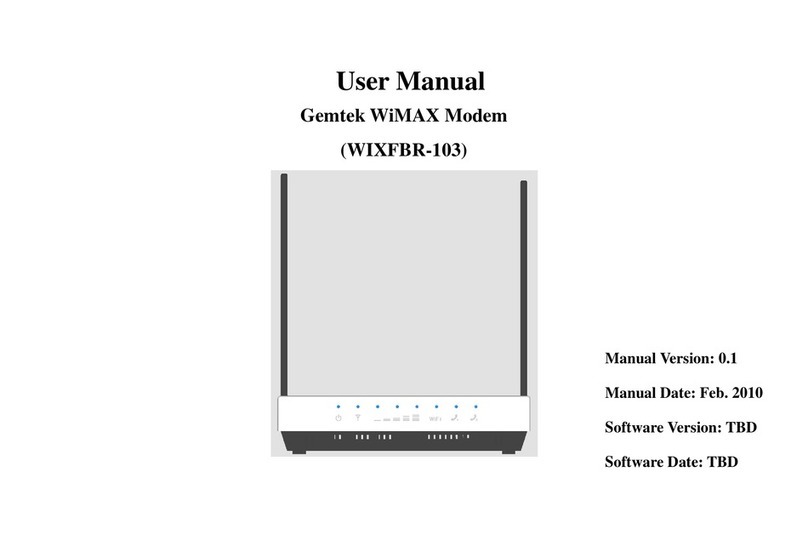TRUST 245B SPEEDLINK ADSL WEB MODEM
2
4 Getting acquainted with ADSL
ADSL works via your existing analogue telephone line or digital ISDN line. This means
that the ADSL signal and your existing telephone or ISDN signal enter your house via
one cable. These two signals must be separated from each other if you still wish to use
your telephone.
The two signals are separated using a filter/splitter. A filter ensures that the telephone
signal is filtered out of the ADSL/telephone connection. If you do not use a filter, you will
hear the ADSL data traffic over the telephone line. The splitter provides two connections:
one for the telephone and one for ADSL. The splitter is fitted at the start of the incoming
telephone line. From the splitter, the line goes to the ADSL modem and your existing
telephone or, for ISDN, to your existing ISDN converter.
Depending on the subscription that you have with your Internet Service Provider or your
ADSL line supplier, you may have already received this splitter. If you do not have a
splitter, you will not be able to use your telephone when you are connected to the
Internet. You can purchase a splitter from your local telephone shop.
ADSL is divided into three groups:
Annex A – ADSL via an analogue telephone line, also called a PSTN line.
Annex B – ADSL via ISDN.
Annex C – (mainly used is Japan and not in Europe)
Depending on the subscription provided by your Internet Service Provider, you use either
Annex A or Annex B. Contact your ISP for information regarding the type of ADSL line
you have.
Use the Trust 245B Speedlink ADSL Web Modem for Annex B.
Your subscription is provided by two parties, namely your ISP and your ADSL line
provider. This can vary per country and sometimes one provider supplies both services
(ISP and ADSL line). In many cases, you, as the user, will not notice this. Contact your
ISP if you have any questions regarding your subscription.
The settings for your ADSL modem mainly depend on the ADSL line provider. These
settings are also known by your ISP. It may also be possible that two different ISP’s use
the same ADSL line provider. This means that certain settings will be the same for these
ISP’s. Since there are more ISP’s than ADSL line providers, we have included a number
of ADSL line providers in the settings for the Trust Speedlink ADSL Web Modem. You
then only have to select the correct ADSL line provider without having to input the
settings yourself. This procedure is described in chapter 6.1. Contact your ISP to find
who provides your ADSL line.
You will have to input the settings manually if your ADSL line provider is not included in
the list in the installation software or the settings have been altered. There are 4 settings
which are crucial for connecting to your ISP (plus the other requirements stated in
chapter 3).
These are:
Network (Internet) protocol: (PPPoA, PPPoE, Bridge/Routed internet).
VPI value: (a value between 0 and 255) (0 < x > 255).
VCI value: (a value between 32 and 65535) (32 < x > 65535).
Encapsulation protocol: (LLC/SNAP, VCMUX).
This procedure is described in chapter 6.2. Contact your ISP for the correct settings.
Note: It is not always the case that if you have always used an ISDN line for your
telephone conversations that your ADSL subscription will automatically be
Annex B. Always contact your ISP to find out which ADSL line you have.
